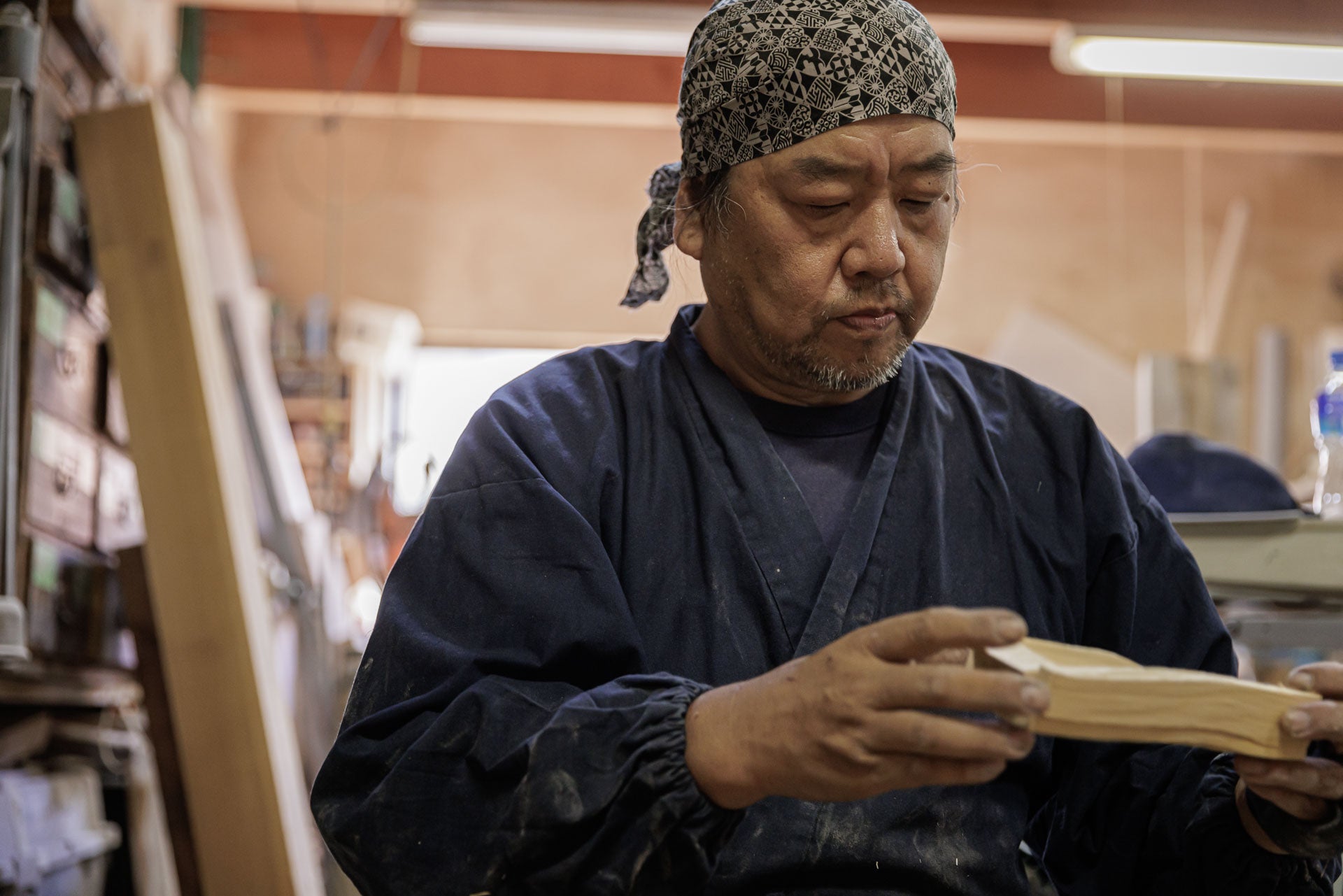
Shuji Nakagawa

Contemporary Wooden Bucket Artist Nakagawa Shuji <br data-mce-fragment="1">Wooden buckets have long been a part of daily life in Japan. From the birth bucket to the coffin, these tools were used throughout a person's life, but now they are no longer in use. A 700-year-old technique could disappear in just a few decades, so it seems we need to take a moment to think about our daily lives.
Shuji Nakagawa of Nakagawa Mokkogei Hira Kobo is a rare artist who is always pursuing new possibilities while preserving the traditional techniques of wooden barrels. He is a traditional craftsman and an artist who studied art at Kyoto Seika University, majoring in three-dimensional modeling. Wooden barrels, which have been updated as "beautiful tools," go beyond the boundaries of traditional crafts filled with wisdom for daily life and enrich our lives as usable art.
The latest work, the "YORISHIRO" series, is a work that makes the most of the charm of wood as a material while making the most of the wooden barrel technique. Its mysterious appearance evokes the strength, severity, and sublime beauty of nature.
"Ever since I was a child, I loved working with my hands, so I was lucky that my parents ran a manufacturing business. But I wanted to develop both my sensibilities as an artist and my craftsmanship, which requires strict planning and precise work. So, during my training, I started earlier than others and worked later than others, and somehow managed to achieve both. Thanks to that, I was able to make more friends in the art field, and I think I was able to create an environment where creative elements could be incorporated into the world of craftsmen."

The roots of Nakagawa Mokkogei, located in Hiradake, Shiga Prefecture, an hour from Kyoto, date back to when my grandfather, Kameichi Nakagawa, apprenticed at Tarugen, a long-established barrel maker in Kyoto. His skills were so well-received that he became independent and started Nakagawa Mokkogei.
Currently, the second generation owner, Kiyotsugu Nakagawa, has taken over the business, but since he was designated a Living National Treasure in 2001, the third generation owner, Shuji, has set up an independent studio at the foot of Mt. Hira, beside Lake Biwa. He chose this location because he liked the scenery of Mt. Hira, which he visited with the Wandervogel club during his student days.
Mt. Hira, located to the west of Lake Biwa and representing the prefecture, is a famous mountain that was even mentioned in the ancient Man'yoshu. In autumn, the entire mountain is dyed in red leaves, and in spring, a unique seasonal wind called "Hira Hakko" blows.

"YORISHIRO" - A condensed version of the beauty of nature
Since ancient times, people have felt a sense of mysticism in sacred trees and rocks, and have regarded them as places where gods dwell. The powerful, undulating natural wood has a different kind of beauty to the straight grain used for wooden barrels.
"Originally, wood with knots couldn't be used to make wooden barrels, so it was burned as firewood to make fuel. But if you take advantage of the knots and split the wood along the grain, you'll notice that it has the same water-resistant functionality as a barrel, but can also have a completely different beauty. It's not the natural beauty that it is, but the beauty of art that is enhanced by the addition of some work. When you pursue this balance, strangely enough, the essence of beauty often also makes sense as a function."
Just like a flower arrangement that brings out the charm of flowers by adding a human sense of balance to their natural beauty, YORISHIRO has the appeal of bringing moisture into your life by bringing nature into it.

From Artist
I originally collected knotted wood that could not be used for wooden barrels because I thought it was cool. Using the techniques of wooden barrel making, I think I have created a vase that is filled with the charm of wood that is different from that of straight grain. Straight things stay straight, and curved things are developed to bring out their individuality and turn them into something attractive. As a craftsman who works with wood, this is the realization of my childhood dream of becoming a craftsman who can use an entire log. Please take a look at the charm of the wood grain and the techniques that went into making a barrel.





